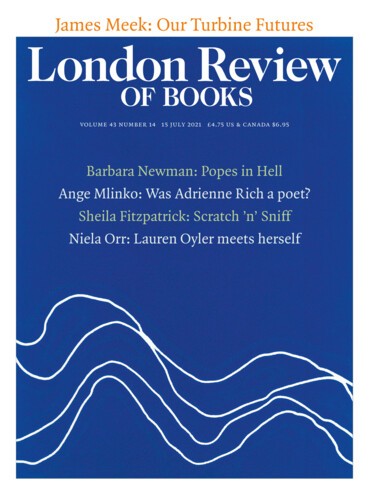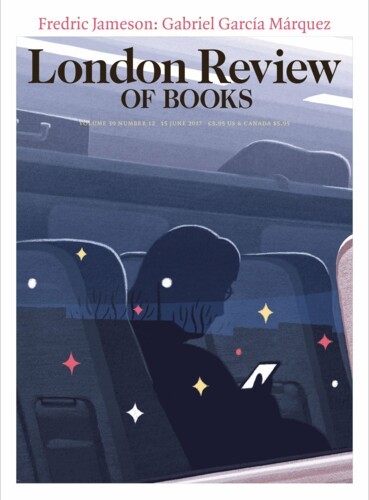One of the most seductive items for sale on the website of Arthur Beale, yacht chandler, is a ‘chart work pack’ for just under thirty quid. It includes an elegant course plotter, two Staedtler pencils, a Staedtler eraser and a pair of brass dividers that looks like a primitive device for lancing an abscess. The pack is shown with its contents spread out on a nautical map titled ‘Approaches to the Solent’. You could even contemplate a trip to the Isle of Wight if you owned an Arthur Beale chart pack, never mind a boat. But the shop, on Shaftesbury Avenue, closed last month amid a flurry of funeral orations in the press, brisk elegies on Twitter and pictures on Instagram.
The last day of trading was a sorry affair, coming after a long clearance sale with 20 per cent off everything. Most of the unsold stock, including the clothes, had already been sent back to the warehouse. A stack of Puggy gloves – nylon with polyurethane palms – lay on the floor of the display window. Puggies are said to be good if you’re sanding off varnish, but one of the staff recommended them for gardening to a woman buying masking tape. There was all sorts of tape in the window: tape for stopgap repairs to sails and canvas; a special tape in colourful rolls for mending spinnakers; then too, the usual reels of rope in fibre and nylon; pots of Epifanes yacht enamel and Toplac matting agent; plentiful cleats in brass and nylon (apparently the two prerequisites for modern sailing are a fair wind and a ton of nylon). But the most striking element of Arthur Beale’s shopfront – the mannequins in sailing outfits – had gone.
The staff at the shop were always ingenious window dressers. Gawping at their display used to be one of my favourite pastimes: the LRB office is a five-minute walk away. Over the years they produced a series of wonderful sets, staging life on the ocean wave, above and below deck, with stilted figures in seafaring clothes – oiled wool pullovers, sou’westers, even a fetching pair of men’s offshore salopettes – surrounded by all the technical gear you need to stay afloat. Breton caps à la Lenin (and Jeremy Corbyn) and ‘Ensign beanies’, a strong seller, were also on show. But the pullovers are the real stuff of legend. The Beerenberg is made from ‘black Welsh mountain wool’ and named for the world’s most northerly volcano: ‘high in the Arctic … the winds can rage at 150 knots’. Before the pandemic Arthur Beale was a niche store with a thriving digital sales operation – but who, during lockdown, was kitting out to navigate the Solent or head for the Canaries? With high rents, which one of the staff put between £40,000 and £50,000 a year, the time had come to take in sail. Arthur Beale is now an online chandler, though pop-ups and even a proper shop outside London may still be on the cards. Good news for sailors, but not for window shoppers and lunch break flâneurs in Central London. I already miss the imperturbable mannequins with their enviable sea legs, the barometers and clocks in brass casings, the bulkhead lights, binnacle rings, compasses, piston hanks and wall brackets. And I won’t be the only one to miss the hanging shop sign when it’s taken down: ‘Yacht Chandlers, Established Four Centuries’.
One piece of evidence for the shop’s long ancestry is a document from the 1790s, which has John Buckingham – predecessor to two Arthur Beales, father and son – trading as a ‘hemp & flax dresser, tow dealer and rope maker at No. 12 Middle Row St Giles near Monmouth Street’, very close to the premises that have just been cleared. Alasdair Flint, Arthur Beale’s managing director, who rescued the company from liquidation a few years ago, believes its origins go back further. ‘The shop was already quite old when the Great Plague of London struck,’ he said earlier this year. ‘It got through that one and we plan to get through this one too.’
Rope was central to the company’s success. In the 1860s, the Alpine Club – which claimed to be the first mountaineering club in the world – decided to investigate ‘what kinds of ROPES, AXES and ALPENSTOCKS will be found most safe and useful for mountain work’. The Alpine Journal reported in 1867 that ropes were the object of ‘a large number of experiments’ by the club to find out whether they could withstand a weight of twelve stone dropped and checked at five feet. Most of the braided samples and ‘many most carefully made twisted ropes gave way in such a manner as was very startling to some of our number, who had been in the habit of using these treacherous cords with perfect and most unfounded confidence.’ Only four passed the test, ‘all made by Messrs Buckingham and Sons’.
Three Buckingham ropes survived more arduous tests and it was with pleasure – even a touch of relief – that the report’s authors went on to list the merits of the winners, ‘which are now made by Messrs Buckingham expressly for the Club’ and identified by ‘a red worsted thread twisted in with the strands’. ‘Expressly’ didn’t mean ‘solely’, of course: Buckingham and Sons weren’t about to keep this success to themselves. Advertisements in the newspapers promptly announced the company as ‘the only maker of the celebrated Alpine Club Rope, which is almost exclusively employed by the leading mountaineers of the time … Beware of fraudulent imitations.’ I like that curious formulation ‘almost exclusively’. I’m almost exclusively not interested in sailing or mountaineering; almost exclusively confused by rope and almost exclusively baffled by any attempt to secure a piece of luggage to a roof rack with nylon cord. Perhaps that’s why the serenity of Arthur Beale’s mannequins was so beguiling: it was always a story of easy-going competence.
By the start of the 20th century Buckingham and Sons had become ‘Arthur Beale, Late John Buckingham, rope, twine and horsehair manufacturer’. But it wasn’t all climbing and sailing. The location of the shop on the corner of Monmouth Street and Shaftesbury Avenue meant that theatre owners and stage managers were among its most enthusiastic customers. Hauling heavy, complicated flats up and down was inconceivable without Arthur Beale’s sturdy ropes of ‘best Manilla hemp’. The same was true for the house curtain: if you’d ever had to drop it at speed on a bad night in the manner of an Alpine Club experiment, Buckingham’s famous rope would have drawn it up short an inch from the stage floor, like a jumper on a bungee line. The nautical dramas in the shop window and the large watercolour panels displayed at Christmas like backdrops to a seaside pantomime hinted at a long acquaintance with theatre and the art of camp.
Ship chandlery is a less glamorous profession than going to sea, but it has its charms. Conrad describes a chandlery interior in Lord Jim as ‘a vast, cavern-like shop which is full of things that are eaten and drunk onboard ship: where you can get everything to make her sea-worthy and beautiful, from a set of chain hooks for her cable to a book of gold leaf for the carvings of her stern … There is a cool-parlour, easy-chairs, bottles, cigars, writing implements, a copy of harbour regulations, and a warmth of welcome that melts the salt of a three-months’ passage out of a seaman’s heart.’ (Hospitality was good for business.) The ship chandler sells to companies and crews who put to sea for profit; a London yacht chandler mostly supplies the leisured sailor. Either way there’s no longer a demand for hard tack and live poultry. But there’s still money to be made supplying yachts. Flint reckons that in a non-pandemic year around two thousand yachts visit St Katharine Docks, a stone’s throw from the Tower of London. You might pay £100 a night for a berth depending on the size of your boat; long-term moorings can cost £16,000 a year. SKD Marina is part of Blackstone Property Management, an arm of the Blackstone Group (headquarters Park Avenue, New York), with assets of more than $600 billion. ‘A lot of Londoners own boats,’ according to Flint. ‘City workers and bankers often spend the weekend with their yachts.’ This high-end flotilla is bobbing up and down on a river of money; it would be astonishing – and sad – if Arthur Beale went under for good.
Send Letters To:
The Editor
London Review of Books,
28 Little Russell Street
London, WC1A 2HN
letters@lrb.co.uk
Please include name, address, and a telephone number.

